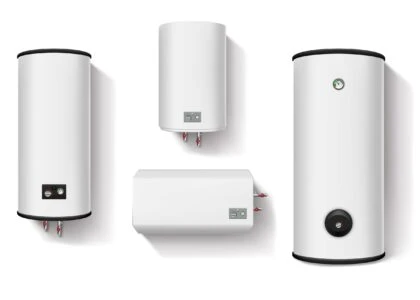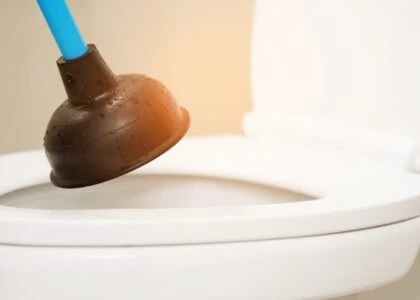Homeownership rates are slightly higher in Florida than in the US, which tends to indicate that we’ve got some first-time homeowners in our great sunshine state. Buying your first home is high on the list of memorable “firsts,” but the firsts don’t stop there.
One thing that new homeowners aren’t always prepared for is their first plumbing leak. How do you detect a plumbing leaking early? Who teaches you how to fix a plumbing leak?
We’re here to give you a head start by talking about the signs of a plumbing leak that you should never ignore. Some may seem obvious, but there are plenty of hidden plumbing leak signs that aren’t quite as intuitive.
Ready to get started? Read on to learn all about seven important signs that you’re dealing with a plumbing leak.
1. A Major Spike in Your Water Bill
You may not have known this, but as a Florida homeowner, you should be spending less on your water bill than homeowners in every other state in the US. That’s right, one of the perks of living in Florida is that we have the lowest average water bills in the nation.
As a result, you probably pay your water bill most months without thinking twice. What if, suddenly, you get a water bill that’s twice as high as normal? Sure, you might wonder if you’ve started using more water than normal, but there’s another potential culprit: a plumbing leak.
Something as simple as a constantly running toilet or a cracked and dripping pipe can cause a serious spike in your water bill. If you notice a change and know that you haven’t made any substantial changes in your water usage (ie turning on a daily sprinkler system or filling up a pool), consider investing in water leak detection services. You just might find that somewhere in your home, you’re losing water by the gallon–something that is a hazard for your wallet and your property value.
2. Stains, Bubbles, and Other Signs of Water Damage
There are a few signs of water damage that you should never overlook in your home. Interior water damage can indicate issues like a leaking roof or high humidity levels, but it is also one of the biggest pipe leak signs in the books.
Inspect your walls and ceilings for signs of water damage. This can look like stains or discoloration in isolated areas. Ongoing water damage in the walls or ceiling can also cause your paint to bubble and swell.
You should also keep an eye out for any pooling water in your bathrooms, kitchen, laundry room, and other areas of the home that rely on plumbing and appliances. Keep in mind that when water pools on the floor for long periods of time, it can weaken the flooring and the ceiling below, leading to collapses that are destructive and costly to fix.
3. Mold and Mildew Growth
Mold doesn’t just look or smell funny. Certain types of mold, particularly when growing in large quantities, can cause health problems like respiratory symptoms or increased allergy symptoms.
Like water damage, mold and mildew can indicate that your indoor humidity levels are too high. However, mold and mildew can also indicate that you’re dealing with a plumbing leak. This is often the case when you find mold and mildew under sinks, growing on walls, or growing on the ceiling.
How can you spot mold? Look for black, brown, green, or gray discoloration, and pay attention when you start to notice unusual musty or earthy odors. Mold often grows close to the source, but because mold spores can spread, you may have to do some hunting to find the location of the leak.
4. Foundation Damage
Even new homeowners know that foundation damage is bad news. It undermines the structural integrity of your home, causes walls to crack, prevents windows and doors from closing properly, and, when left unattended, can cost a fortune to fix. What new homeowners might not realize is that foundation damage can be caused by a hidden plumbing leak.
When water is leaking on or below your foundation, it can lead to erosion. As the foundation starts to shift or erode, it may start to develop hairline cracks. The presence of water coming from a leaking pipe or sewer line can exacerbate those cracks by seeping into them and causing quicker, more destructive erosion.
How can you spot foundation damage? Get a foundation inspection at least once every few years and take note of any interior signs of foundation damage, such as hairline cracks in the drywall. The moment you notice foundation damage, it’s time to hunt for the source, and that includes inspecting your plumbing for leaks.
5. Wet, Green, or Caved-In Spots in the Yard
Florida homeowners take great pride in their yards, which means that you’re likely to notice any unusual changes that start to occur. This is good news because it means that you’re likely to spot the signs of a plumbing leak outside of your home, not just inside of your home.
When you’re doing yard work, make sure to take note of any spots in the yard that seem unusually damp or green. This could indicate that a plumbing line below ground has sprung a leak and is over-watering your yard. You may also notice that part of your yard is starting to sink or cave in, which can indicate that you’ve had an underground leak for quite some time.
6. Weak Water Flow Throughout the House
You run the shower in the master bedroom and the water flow seems weaker than normal. This might indicate an issue with the aerator on the shower head or some kind of blockage in the water line that connects to your shower.
Just to be sure, you should test other water sources around the house, like the guest bathroom shower and the kitchen sink. What if you start to notice weak water flow in other areas of the house, too?
A change in water pressure should never go ignored, especially if it’s happening all throughout the house. Chances are, what you’re dealing with is a leak in the supply line that feeds water to your whole plumbing system. When this is the case, you’re going to want to move fast, since supply lines are pressurized systems and a single crack can spell big trouble down the line.
7. Discolored Pipes
Any time you find yourself in the midst of your pipes (basement reorganizing, anyone?), give them a good looking over. Pay close attention to any valves or connection points. What you’re looking for is discoloration.
Most of the time, that discoloration is going to be on the redder side–think rust. This kind of discoloration is one of the easier-to-miss signs of a plumbing leak. In some cases, it’s less of a leak and more of drip or dewiness caused by a microscopic crack.
No matter what, discoloration means that it’s time to have some of your plumbing replaced. The sooner you tackle the issue, the less residual damage you’ll incur.
Bonus Tip: Spotting Signs That a Plumbing Leak May Be Imminent
Sometimes, you can catch plumbing leak signs before the leak occurs. By catching these issues in their tracks, you can prevent everything from a minor leak to a full-blown flood.
For example, if your pipes freeze (unusual in Florida but not impossible), you’re going to want to apply heat to them and increase your insulation to thaw them out slowly. When water freezes, it expands and blocks any remaining water flow, and both of these things can cause your pipes to burst.
A more common issue that Florida homeowners may encounter is brown or discolored water coming from the faucets around the house. When your water starts changing colors, you’re going to want to get it looked at quickly. Not only is it unpleasant to drink or bathe in but it could indicate that your pipes are starting to corrode, which can lead to cracks and leaks down the line.
Let Us Help You Spot and Resolve Plumbing Leaks
Whether you’re a first-time homeowner or you’ve gotten lucky with your plumbing over the years, it’s important to stay in the know about the signs of a plumbing leak and how to fix a plumbing leak before it gets out of control. We hope that this guide has helped you with the former, and now we’re ready to help you with the latter.
If you’ve got concerns about your residential plumbing or you want us to come out and inspect your property for plumbing leaks, contact us today. Home Team Plumbing is proud to help Pinellas Park residents with all of their plumbing needs.





